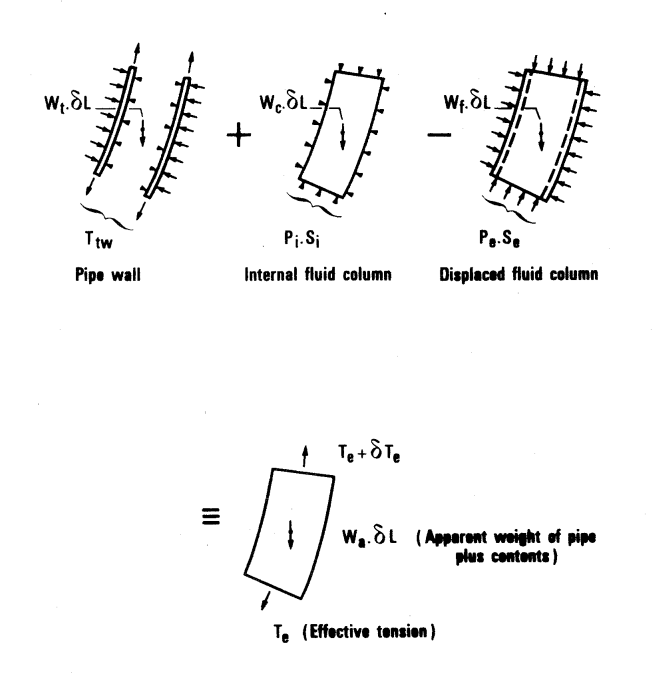EngineerMickeyMouse
Structural
- Jan 15, 2015
- 44
Greetings.
My question is in reference to the Effective Axial Force phenomena.
Please imagine pipeline constrained at the ends and loaded with internal pressure, with fluid inside.
From structural perspective, internal pressure, constraints and Poisson's ratio will effect in Tensile force in the pipe's wall.
From fluid mechanics perspective, upthrust of the fluid will effect in Compression force in the pipe's wall.
Superpositions of this forces will be always compression force, since Poisson's ratio for steel is 0.3 which is smaller than 0.5. If it would be larger, the force would be in tensile and there would not be danger of buckling.
It is obvious how to model in solid FEA pipe segment an internal pressure, but I have no idea how to include Compression force with fluid mechanics origin? Could you please advise, and please do not send me to CFD, since I would like to perform this in static linear analysis.
My question is in reference to the Effective Axial Force phenomena.
Please imagine pipeline constrained at the ends and loaded with internal pressure, with fluid inside.
From structural perspective, internal pressure, constraints and Poisson's ratio will effect in Tensile force in the pipe's wall.
From fluid mechanics perspective, upthrust of the fluid will effect in Compression force in the pipe's wall.
Superpositions of this forces will be always compression force, since Poisson's ratio for steel is 0.3 which is smaller than 0.5. If it would be larger, the force would be in tensile and there would not be danger of buckling.
It is obvious how to model in solid FEA pipe segment an internal pressure, but I have no idea how to include Compression force with fluid mechanics origin? Could you please advise, and please do not send me to CFD, since I would like to perform this in static linear analysis.

